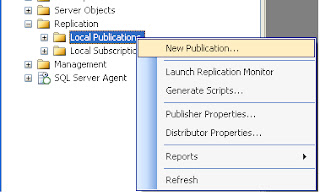This article explain in the simple way how to bind the silverlight datagrid using linq to sql. I have tried to capture all of the important details and provide a step-by-step example here.
Note, i'm using customer table of the AdventureWorksLT Database for this project.
We will start creating the project in Visual Studio 2010
1. Create a new Silverlight application and name the application as “DataGrid”.2. Right click on your the web project, then Add->New Item, and choose “LinqToSql”.
3. Open the Server Explorer, then open the table and drag the table onto the Designer
workspace.
4. The Serialization mode to Unidirectional by right-clicking on the Designer workspace and
using the Property.
5. Right click on your web project, then Add->New Item, and choose “WCF Service”.
6.Open the IService1.cs file and add the GetCustomers method.
List<Customer> list = db.Customers.ToList<Customer>();7. Open the Service1.svc.cs file and implement the GetCustomers method.
public List<Customer> GetCustomers()
{
DataClasses1DataContext db = new DataClasses1DataContext();
List<Customer> list = db.Customers.ToList<Customer>();
return list;
}
8. Add a reference to the Web Service in the Silverlight project- To do that you need to
right-click on the references in the Silverlight project and choose the
'Add Service Reference' item. Then add the Service1.svc.
9. Create a new DataGrid and Button and Set the DataGrid AutoGenerateColumns
property as true. < AutoGenerateColumns="True" >
10. In the button's Click event, create a new instance of the WebService, subscribe to the
GetCustomerDetails event and call the GetCustomersAsync method.
11. Finally, in the GetCustomerDetails event handler, bind the DataGrid. Using this codeprivate void button1_Click(object sender, RoutedEventArgs e)
{
ServiceReference1.Service1Client webService = new DataGrid.ServiceReference1.Service1Client();
webService.GetCustomersCompleted += new EventHandler<DataGrid.ServiceReference1.GetCustomersCompletedEventArgs>(GetCustomerDetails);
webService.GetCustomersAsync();
}
void GetCustomerDetails(object sender, DataGrid.ServiceReference1.GetCustomersCompletedEventArgs e)12. Now run the program and click on display button to display the details.
{
this.Customer_Grid.ItemsSource = e.Result;
}







































